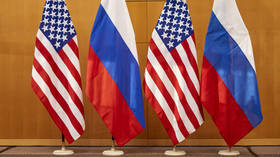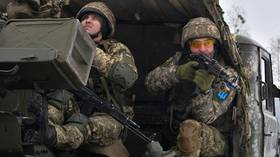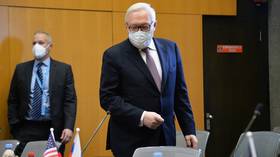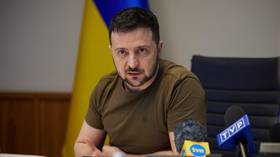Moscow outlines when ‘frozen’ dialogue with US may restart

The dialogue on strategic stability between Russia and the US may only resume after all the goals of Moscow’s military operation in Ukraine are achieved, a high-ranking Russian diplomat has said.
“As of today, there’s no use talking about any prospects for negotiations on strategic stability with the US,” Vladimir Yermakov, who heads the Department for Non-Proliferation and Arms Control at Russia's Foreign Ministry, pointed out on Saturday.
“This dialogue is formally 'frozen' by the American side,” he said, adding that Washington’s moves concerning the matter “are being pointed in the complete opposite direction” than those of Moscow.
The sides will likely be able to return to “a substantive conversation about the prospects of resuming a full-fledged Russian-American negotiation process on the strategic agenda only after the implementation of all the tasks of the special military operation in Ukraine,” Yermakov added.
The US actively supports Ukraine in the conflict with Russia, providing Kiev with funds and weapons to continue fighting.
Washington has committed $4.3 billion to Kiev’s military since 2021, Pentagon spokesperson John Kirby said on Friday, also revealing that the US has begun training Ukrainian troops in Germany and elsewhere in Europe.
Earlier this week, US Defense Secretary Lloyd Austin openly acknowledged that, by helping Ukraine, Washinton was trying to see “Russia weakened to the degree that it can't do the kinds of things that it has done in invading Ukraine.”
Moscow and Washington last discussed strategic stability in Europe, which includes nuclear nonproliferation, during talks in Geneva in mid-January, just over a month before the breakout of the Ukrainian conflict.
According to sources, the Russian delegation “'spoon-fed' its proposals for a stable continent” to the Americans to avoid any misunderstandings, with the key point being curbing NATO’s eastward expansion. However, the negotiations brought no results.
Russia sent troops into Ukraine on February 24, following Kiev's failure to implement the terms of the Minsk agreements, first signed in 2014, and Moscow's eventual recognition of the Donbass republics of Donetsk and Lugansk. The German- and French-brokered Minsk Protocol was designed to give the breakaway regions special status within the Ukrainian state.
The Kremlin has since demanded that Ukraine officially declare itself a neutral country that will never join NATO. Kiev insists the Russian offensive was completely unprovoked and has denied claims it was planning to retake the two republics by force.
















